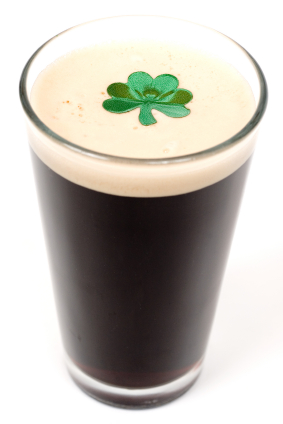In 2014 Innis & Gunn announced that they would let fans of the brewery vote on the recipe for an upcoming brew. Fans voted on the style of beer, specialty malt, hop, type of cask the beer would be aged in, and the name of the beer. One fan who voted for each winning ingredient and beer name received an Innis & Gunn prize pack and would have their name appear on the bottle.
I was one of the lucky four winners when I voted for Northern Brewer hops to be used in the beer. Innis & Gunn sent me a prize pack from their headquarters in Scotland. I emailed an image of my signature to appear on the bottle, and eagerly anticipated seeing the beer hit store shelves. The beer is to be called “Golden Gunn”: a Scotch Ale, brewed with Caramalt like I used in my Geary’s Summer Ale clone, Northern Brewer hops, and aged in Islay (Pronounced eye-lay) Scotch whiskey barrels.
In the 16 months since the beer was announced a lot has been going on at Innis & Gunn. The company was founded by accident. The beer was brewed only to condition Scotch whiskey barrels. The plan was to just dump the beer once the barrels were ready. As it turned out the beer was excellent and a company was born. The company has slowly grown since 2003 and for the past year has been planning to open its own brewery.
Golden Gunn is going to be one of the first brews made at the new brewery. Unfortunately that won’t be until 2017. The folks at Innis & Gunn were nice enough to notify me and send me a second prize package with a couple of new brews. I understand that opening the brewery is their biggest priority, but 2017 is just too long to wait for me. I decided to brew the beer myself!
The four ingredients were certainly a starting point. I made sure to use all of them in the recipe. From there I had plenty of latitude in designing my interpretation of a beer that hasn’t been brewed yet: how heavy to make the beer, when to add the hops, type of base malt, and the yeast strain were open to interpretation.
Most Scotch Ales are quite sessionable with the exception of a Strong Scotch Ale or Wee Heavy. Wee Heavy can range anywhere from 6.5%-10% alcohol by volume. All of the Innis & Gunn beers I have had are full-bodied, flavorful, but not too heavy. While researching and developing the recipe starting gravity of around 1.083 and 8% alcohol by volume (ABV) feels about right.
As Innis & Gunn is a Scottish Brewery, the base malt I chose is all British barley. I used Maris Otter malt extract to give the beer a characteristic nutty British malt flavor. Brewing outside during a New England winter is not ideal. If I brew a big beer like this inside my kitchen, extract is just easier. With extract I am also guaranteed to hit my starting gravity making sure the beer doesn’t finish too light. If I were to brew the beer with all grain I would have chosen a Scottish malt like Golden Promise.

The only specialty grains are the Caramalt and a touch of Black Malt I added for color. Neither malt needs to be mashed like flaked grains or specialty malts high in protein. All I had to do was steep the specialty grains for 30 minutes to get flavor, color, and add a bit of freshness.

Scotch Ale is a malt-focused style. Hop flavor is essentially non-existent. I did at a small amount of hops at 10 minutes left in the boil to give this beer some hop flavor. If fans are going to vote on a type of hop it seemed like the beer should have at least some hop flavor.
According to the Wyeast website 1084 Irish Ale works really well in all Scotch Ales. I haven’t used any of the Scottish strains that are out there, but they seem similar enough to 1084. Repitching yeast from BeerSmith’s Irish Stout saves me time, money, and effort. I have no doubt it will work perfectly fine here.
Islay Scotch barrels aren’t exactly easy to come by for an American homebrewer. Even used American bourbon whiskey barrels are expensive and not particularly easy to work with. Oak chips, oak cubes and oak spirals can be used to replicate that wood character. Oak chips are very thin. They impart oak flavor the quickest, but it is a very one-dimensional flavor. For this batch I am using American oak cubes similar to what is used for scotch barrels. The thicker cubes should provide a more complex flavor. One Homebrewtalk user did the math to figure out exactly how many cubes to use. The cubes aren’t uniform in size, but based on that post I guesstimated that 24 cubes, with an average one inch of surface area, would aproximate the surface area of the inside of a barrel.
To replicate scotch barrel aging I will soak the cubes in the scotch before adding to the beer. This will sanitize the cubes, the wood will absorb flavor from the spirit, which will then be imparted into the beer.
Islay is an island off the coast of Scotland and is one of the five recognized Scotch-making regions. Islay scotch is known for it’s peaty and smokey flavor. Being completely unfamiliar with Islay scotch I am using Bowmore Tempest in the beer. At $32 a bottle it was the least expensive bottle of single malt Islay at the store. I couldn’t bring myself to use a $50 or $100 scotch in a beer any more than I could use any expensive, single malt scotch in a scotch and soda. Premium spirits should be enjoyed neat or on the rocks.

My scotch of choice is The Glenlivet 12. The peat is much more prominent in the Bowmore Tempest compared to what I am used to. The flavor up front isn’t a complete departure, but the finish is a wall of peat. Drinking a couple fingers of the Bowmore by itself was an acquired taste for me, but one I grew to enjoy. I really think it will give the beer a unique, smokey quality.
I will let the beer sit in the primary fermenter for two to three weeks. Then I will rack it onto the oak and scotch to age for another 28 days before bottling. I am so excited to try this beer I already designed a label and plan to label all of the bottles. They will look gorgeous in my (fictional) beer cellar, when I bring them to events, or give them as gifts.
See the full recipe here
Follow me on Twitter @JChalifour
Like The Would-be Brewmaster on Facebook
Share what beers you are drinking with me on Untappd
View the complete searchable Would-be Brewmaster Archive here














